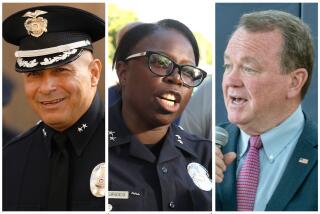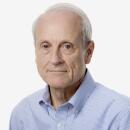L.A., New York, Chicago: Anyone want to be a transportation chief?
- Share via
So it’s official: The top transportation posts in the nation’s three largest cities are in play.
Los Angeles’ Jaime De La Vega is out effective Dec. 1. New York’s Janette Sadik-Khan has made no announcements but has labeled her six years a good run and has less than enthusiastic support from mayoral candidate Bill de Blasio, the likely victor in Tuesday’s election (if polling is to be believed). And now Chicago’s Gabe Klein has announced plans to return to D.C. and the private sector.
All three transportation chiefs brought rapid change to their cities’ streets by making them safer and friendlier for cyclists and by emphasizing public transit and other “alternative” forms of transportation.
FULL COVERAGE: Sharing the road in L.A.
Such an approach would have been unthinkable a decade ago, when cities were locked in a contest to move automobile and commercial traffic as quickly as possible. Bike lanes seemed old-fashioned, and separated lanes — bike lanes protected from cars by strips of concrete or lines of parked cars — were unthinkable.
New York and Chicago both have governments that vest enormous power in their mayors, and those elected leaders can in turn appoint and back up creative and hard-charging commissioners. That political culture can result in rapid shifts in policy and visible changes in the streetscape in relatively short amounts of time.
Sadik-Khan has been called abrasive, and worse, but she is lauded by New York cyclists and pedestrians for wresting streetspace away from drivers. Outgoing Mayor Michael Bloomberg was depicted in a 2011 New York Times article as at least asserting that Sadik-Khan was not under his control. Either she was strong enough to flout the mayor’s direction, or strong enough to shield him from flack over her (and perhaps his) transportation policies.
Klein was brought in just two years ago by political powerhouse Rahm Emanuel. Klein brought with him a solid background in transportation tech and the cycling business.
It’s different in Los Angeles. We no longer have the “weak mayor system” of years past, but neither are our mayors as powerful as their counterparts in New York or Chicago, and their appointees are not powerful commissioners but general managers of departments whose employees are protected by civil service rules and City Council members.
Not long ago, the general managers themselves enjoyed civil service protection, so they could easily outlast mayors but had little motivation to get much accomplished in a short amount of time. A transportation or sanitation engineer, for example, could expect to work his way up through his department or bureau over the course of decades and then finish out his career at the top, having never worked in the private sector or for another city.
Then-Mayor Antonio Villaraigosa famously hired Michigan state transportation chief Gloria Jeff to head the Department of Transportation here; the move made some news in part because he was looking to an outsider. But Jeff’s outspokenness and her sometimes abrasive style were out of place at City Hall, and the mayor soon fired her. In true old-school Los Angeles fashion, Jeff appealed her termination and ultimately settled for a large severance package.
Los Angeles is slowly turning toward a more results-oriented and, in a sense, entrepreneurial type of government, in which department chiefs can be expected to come in for a short haul before moving on to other adventures. Eric Garcetti is the first Los Angeles mayor to consistently refer to his general managers as his “cabinet,” but he has more than 30 of them and can’t really look to them as the kind of dynamic, rapid-deployment force he needs.
Will L.A., New York and Chicago all trade transportation chiefs among themselves? Or are there talented innovators, either home-grown or riding the circuit of city halls and statehouses, who haven’t yet reached the rank of superstar but can be snatched up by Garcetti, Emanuel or, presumably, de Blasio? We should be finding out in the coming weeks.
ALSO:
Cycling Central Avenue in search of history
Should a liar be a lawyer? The Stephen Glass case
L.A. streets aren’t safe enough for cyclists, but we’re getting there
This post is part of an ongoing conversation to explore how the city’s cyclists, drivers and pedestrians share and compete for road space, and to consider policy choices that keep people safe and traffic flowing. For more: latimes.com/roadshare and #roadshareLA.
More to Read
A cure for the common opinion
Get thought-provoking perspectives with our weekly newsletter.
You may occasionally receive promotional content from the Los Angeles Times.











